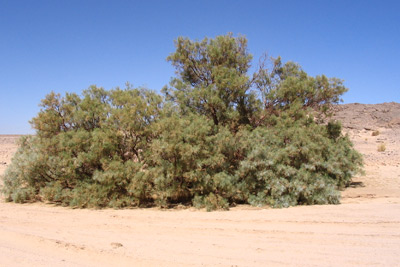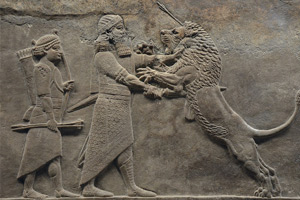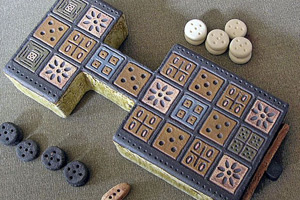
Trees in Sumeria
It is easy to think of Sumeria as a barren land, only kept alive by irrigation canals. In addition to irrigated trees such as date palms, we also find interesting flora such as the tamarisk, juniper and cedar.

The Jemdet Nasr period was around 3100-2900 BCE in Mesopotamia. It followed the Uruk period and ended when the Early Dynastic period started. The period is named after the excavations at Tell Jemdet Nasr in Iraq.
This period is mainly know for its unique pottery. This pottery is painted and usually found in rich dwellings or in palaces.
Another important change during this period was the finalisation of the Cuneiform wedge script. It started as realistic drawings of animals and things, and throughout the Uruk period, it progressively became more abstract. At the start of the Jemdet Nasr period, it found its final form.
It is important to mention the difficulty of measuring town sizes and timelines exactly 6000 years in the past. It might be that the Uruk period started earlier, for example. We are guessing the population based on size of the city. All these dates and numbers should be taken as a rough indication, rather than absolute numbers.
You may also be interested in these articles

It is easy to think of Sumeria as a barren land, only kept alive by irrigation canals. In addition to irrigated trees such as date palms, we also find interesting flora such as the tamarisk, juniper and cedar.

If you have visited the Sumerian section of the British Museum, chances are you have seen the Lion Hunt of Ashurbanipal. It is a series of very impressive wall coverings illustrating the King Ashurbanipal's prowess.

Possibly the oldest board game in existence, and surely the oldest we have rules for, the Game of Ur is a fascinating predecessor to Backgammon. Watch a video on how to play it, and see the original at British Museum.